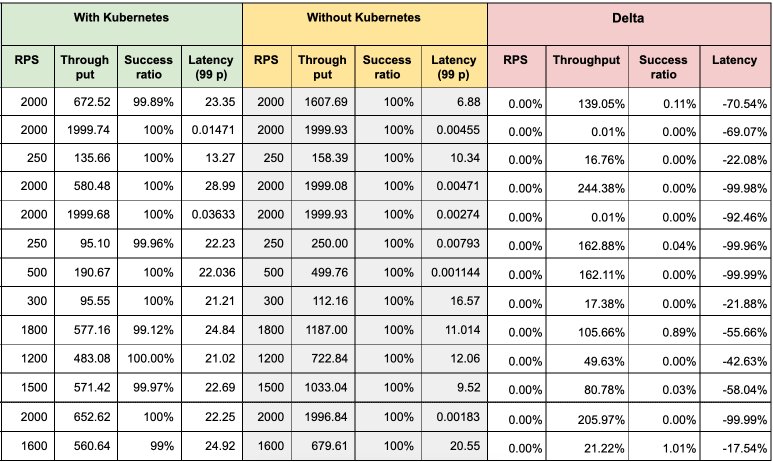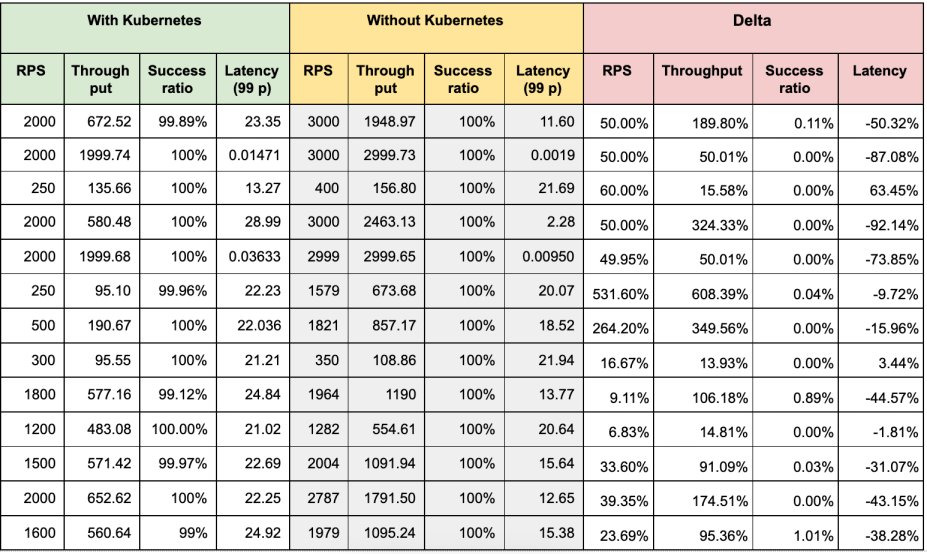In the part 1, The mountain of Kubernetes, I have writen my opinions about Kubernetes. In this journal I will share the results of load testing benchmark of HTTP services deployed in compute engine (normal VMs) versus in Kubernetes, so I can prove my words, not just ranting.
-
Benchmarking Kubernetes (this journal)
Goals
The goal of load testing is to find the maximum throughput, or transaction per second (TPS), that can be served by HTTP services deployed on VMs, with a minimum success ratio of 99%.
Environment
The HTTP services that we will benchmarking are written in Go 1.15. The infrastructure is run on Google Cloud Platform (GCP). There are four parts on the whole infrastructure: the proxy server, the HTTP services, Nats (for message broker), and MySQL database on Cloud SQL. Except for proxy server and database, the difference between deploying in Kubernetes and with VM are only the location of HTTP services and Nats.
The benchmark tools that we use is vegeta library written with custom web user interface so that we can repeat the same process with different parameters, especially requests per second (RPS).
Kubernetes
+-------+ +------------+ +-----------+
| Proxy | <===> | Service 1 | <===> | Cloud SQL |
+-------+ |------------| +-----------+
| ... |
+------------+
| Service N |
|------------|
| Nats |
+------------+
The deployment on Kubernetes is usual, all services run on its pods, with resource limit set to 1200m for CPU and 1Gi for memory.
VMs +-------+ +------------+ +-----------+ | Proxy | <===> | Service 1 | <===> | Cloud SQL | | | | Nats | | | | | +------------+ | | | | | | | | +------------+ | | | | <===> | Service N | <===> | | +-------+ +------------+ +-----------+
The deployment on VMs is normal, all services run with systemd, one service run along with Nats, and another’s is in its own VM. Each VMs is a custom machine with 1 vCPU, 1 GB.
Load testing with the same RPS
We have run the load testing previously with Kubernetes. The RPS values in this result is the maximum RPS with success ratio 99% on Kubernetes.
The load testing is run for 10 seconds for each endpoints.
 .
.
Notes,
-
Latency is in seconds.
-
A good result would be positive values on delta Throughput and Success ratio and negative value on delta Latency.
Load testing with maximum RPS
In this testing we are looking for the maximum throughput that we can achieve on environment without Kubernetes and compare them.
 .
.
Summary
On average, overall APIs throughput increase ~92% and the latency decreases ~65%. This means we get more performance when not deploying the services using Kubernetes.
Why?
I cannot say that I am familiar with Kubernetes platform in detail, but from previous article we can see that there are at least three layers before the actual requests from proxy reached our services: the cluster, the node, and the container layer. All of this layers must be routed in and out, which cause increase in the latencies and decrease in the throughputs.